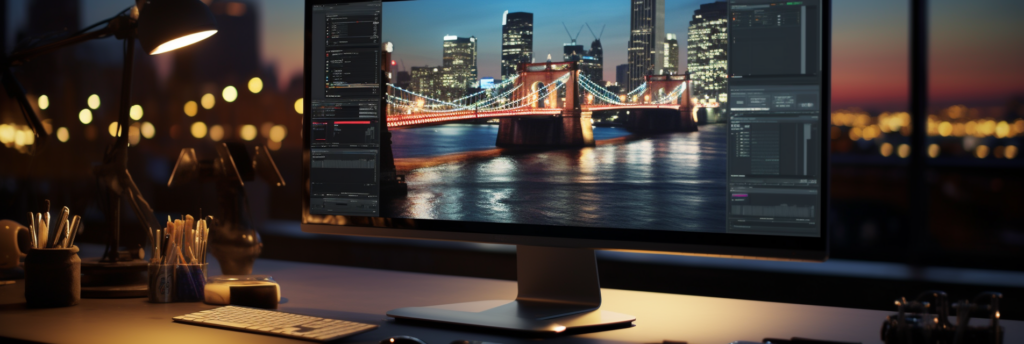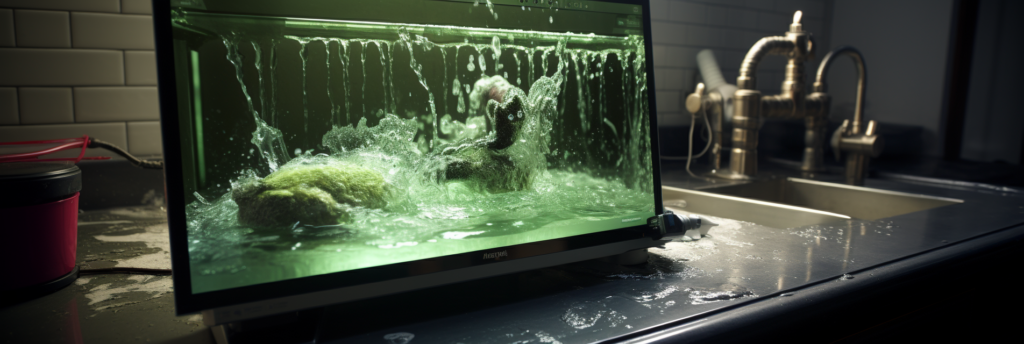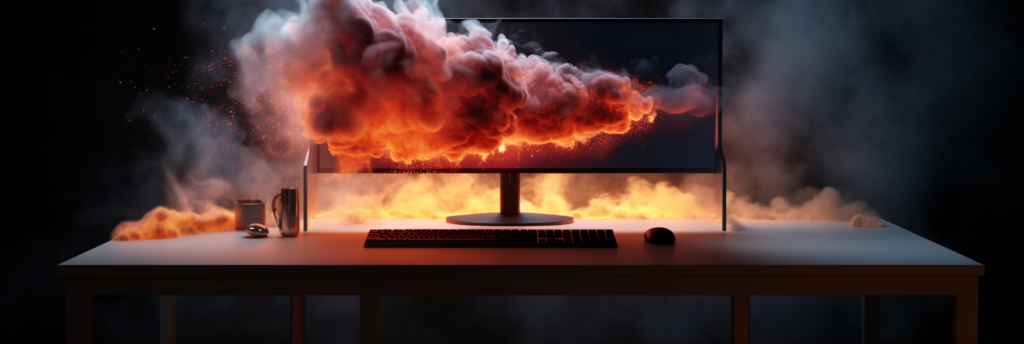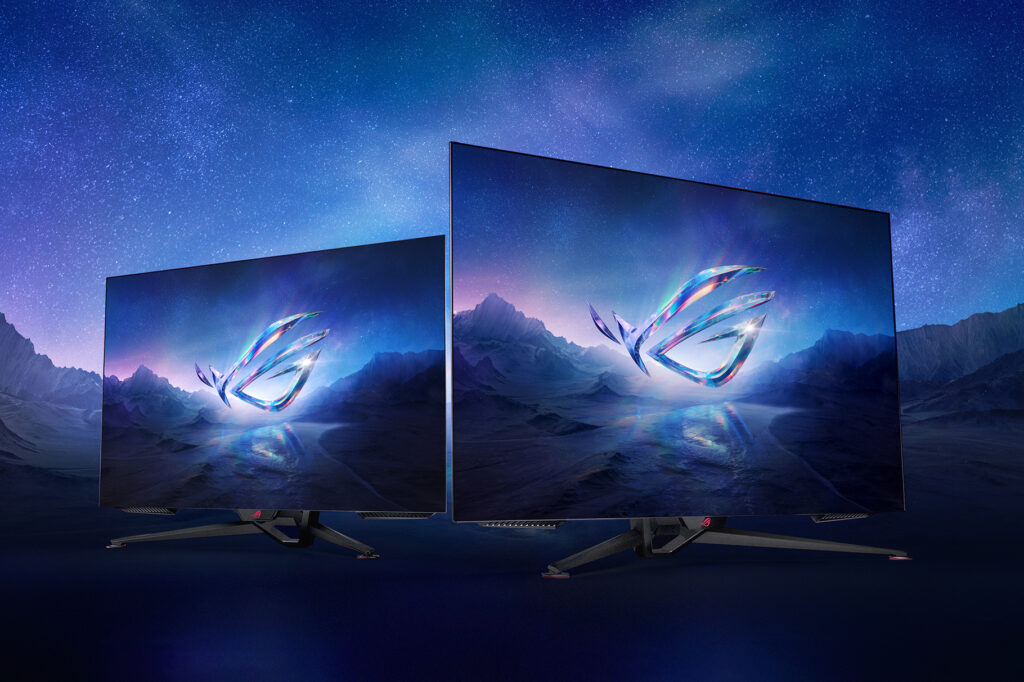Tips to Maintain Your OLED Monitor – 5 Good Things to Do Right Now

Table of Contents
Introduction
If you’re reading this, chances are you own or want to own an OLED computer monitor or TV. OLED stands for organic light-emitting diode, which sounds like something out of a sci-fi movie, but it’s actually a technology that allows for stunning picture quality, vivid colors, and deep blacks. OLED screens are also thinner, lighter, and more energy-efficient than traditional LCD screens. Sounds amazing, right?
Well, before you rush to buy one or show off your new purchase, there are some things you need to know about how to take care of your screen. OLED screens are not cheap, and they can be prone to some issues that can affect their performance and lifespan. In this article, I’ll tell you everything you need to know about how to keep your monitor in tip-top shape and avoid some common pitfalls that can ruin your viewing experience.
OLED Burn-In
First of all, let’s talk about the elephant in the room: burn-in. Burn-in is a phenomenon that occurs when a static image is displayed on a screen for too long, and it leaves a permanent mark or ghosting on the screen. This can happen with any type of screen, but OLED screens are more susceptible to it because they use organic materials that degrade over time. Burn-in can be caused by things like logos, icons, subtitles, or game HUDs that stay on the screen for hours or days.
Move/Hide Static Images
How can you prevent burn-in? Well, the best way is to avoid displaying static images on your screen for prolonged periods of time. If you’re watching TV, switch channels or turn off the screen when you’re not watching. If you’re using a computer monitor, use a screensaver or turn off the screen when you’re not using it. Remove static items on your home screen and auto-hide taskbars. You can also reduce the brightness and contrast settings of your screen, as these can accelerate the degradation of the organic materials.
OLED Built-In Screen Protection Features
LG C3 OLED (LG C1 & C2)
Another thing you can do is to use the built-in features of your PC monitor or tv that are designed to prevent or reduce burn-in. For example, the LG C3 OLED has several features that help prevent and reduce burn-in. First, it has a self-lighting pixel technology that allows each pixel to turn on and off independently, creating perfect blacks and infinite contrast. This means that pixels that are not in use are completely turned off, saving energy and reducing wear.
Second, it has a pixel refresher feature that runs automatically when the TV is turned off or in standby mode. This feature cycles through different colors and brightness levels to refresh the pixels and remove any residual image. Third, it also has a logo luminance adjustment feature that detects static logos or banners on the screen and reduces their brightness to prevent burn-in. Last but not least, it has a screen shift feature that slightly moves the image every few minutes to avoid displaying the same pixels for too long.
ASUS Rog Swift PG42UQ OLED (LG C2 Panel)
If you have an ASUS PG42UQ OLED monitor (another top-notch model), you can use onboard screen protection features like Screen Saver, Pixel Refresh and Screen Move. The Screen Move feature, for example, shifts the position of the image on your screen slightly every few minutes helping protect your screen from burn-in. This feature not only protects your monitor from burn-in, helps to reduce the stress on your eyes and prevent eye fatigue.
Of course, these features are not foolproof, and they may not completely eliminate burn-in if you abuse your OLED screen. So, be smart and don’t leave your screen on with a static image for hours or days. Trust me, you don’t want to see a faint CNN logo or a Fortnite health bar on your screen forever.
READ: What is OLED Burn-In and How to Prevent It – Easy 5 Minutes

How to Clean Your OLED Monitor
Another thing you need to know about how to take care of your monitor or TV, is how to clean it properly. OLED screens are very delicate and sensitive, and they can be easily damaged by improper cleaning methods or products. Here are some dos and don’ts of cleaning your OLED screen:
- Do use a soft, dry microfiber cloth to gently wipe away any dust or fingerprints from your screen. You can also use a slightly damp cloth if there are any stubborn stains, but make sure to wring out any excess water and avoid dripping any liquid onto the screen.
- Don’t use any abrasive materials or tools to clean your screen, such as paper towels, tissues, sponges, brushes, or scouring pads. These can scratch or damage your screen and affect its performance.
- Don’t use any harsh chemicals or solvents to clean your screen, such as alcohol, ammonia, bleach, vinegar, or window cleaner. These can corrode or discolor your screen and cause permanent damage.
- Don’t spray any liquid directly onto your screen, as this can seep into the edges or corners of the screen and cause short circuits or malfunctions.
If you follow these simple tips, you’ll be able to keep your OLED screen clean and shiny without risking any harm.
Subscribe below to receive news and updates on all things OLED. 🙂
Optimize OLED Screen Settings
Finally, let’s talk about how to optimize your OLED screen settings for the best viewing experience. OLED screens have some advantages over LCD screens in terms of picture quality, such as higher contrast ratio, wider color gamut, and faster response time. However, they also have some drawbacks, such as lower peak brightness, higher power consumption, and lower color accuracy.
To get the most out of your OLED screen, you need to adjust some settings according to your personal preference and the content you’re watching. Here are some general guidelines:
- Brightness: This setting controls how bright your screen is overall. You may want to lower this setting if you’re watching in a dark room or, increase it if you’re watching in a bright room. However, don’t set it too high or too low, as this can affect the contrast and color of your screen, and also increase the risk of burn-in.
- Contrast: This setting controls how dark the blacks and how bright the whites are on your screen. You may want to increase this setting if you want a more dramatic and realistic picture or decrease it if you want a more balanced and natural picture. However, don’t set it too high or too low, as this can affect the detail and color of your screen, and also increase the power consumption of your screen.
- Color: This setting controls how saturated and vivid the colors are on your screen. You may want to increase this setting if you want a more colorful and vibrant picture or decrease it if you want a more accurate and realistic picture. However, don’t set it too high or too low, as this can distort the color of your screen.
- Sharpness: This setting controls how crisp and clear the edges and details are on your screen. You may want to increase this setting if you want a more detailed and sharper picture or, decrease it if you want a smoother and softer picture. However, don’t set it too high or too low, as this can affect the noise and artifacts of your screen, and also create unnatural edges and halos on your screen.
Of course, these settings are not universal, and they may vary depending on the model and brand of your OLED screen. You may also want to use different settings for different types of content, such as movies, games, or photos. The best way to find the optimal settings for your OLED screen is to experiment with them until you find what suits you best while minding the aforementioned burn-in prevention tips.
Conclusion
And that’s it! You now know everything you need to know about how to take care of your OLED screen. If you follow these tips, you’ll be able to enjoy your OLED screen for a long time and avoid any problems that can ruin your viewing pleasure.
I hope you found this article helpful and informative. If you did, please share it with your friends and family who also own or want to own an OLED screen. And if you have any questions or comments, please leave them below. I’d love to hear from you.
READ MORE: What is OLED Burn-In and How to Prevent It – Easy 5 Minutes, LG OLED TV C2/C3 vs ASUS OLED PG42UQ for Gaming Review
To get the latest news and updates for all things OLED. Subscribe below now 🙂






Responses